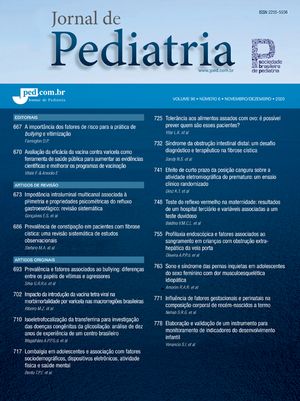
to make pediatricians aware of ideas about how to handle head injury in children under and over 2 years of age, to facilitate understanding and to allow a rethinking about the necessary care when attending children with head injury.
Sourcesa bibliographic review of the theme based on Medline.
Summary of the findingsthe following aspects were analyzed: the overall epidemiological aspects, the concept and the physiopathology of the damage caused by brain trauma. The assessment of the severity of head injury for different age ranges was discussed, as well as the opinion of various authors and the current ideas about the criteria regarding hospitalization, request for supplementary exams and therapeutic approach. The value of neuroimaging exams in cases of head injury and, finally, the prevention strategies and conclusions also were discussed..
Conclusionsin most cases, head injuries in children are rated as not being severe. Nevertheless, even though they are seen as slight, when considering the pediatric population the clinical picture is often asymptomatic presenting neuroimaging changes, the management of head injury at this age range is different from the management in adults.
informar ao pediatra sobre uma visão atual do manejo do trauma craniano em crianças menores e maiores de 2 anos; facilitar a compreensão e permitir uma reflexão dos cuidados necessários ao atendimento da criança com traumatismo craniano.
Fontes dos dadosrevisão bibliográfica sobre o tema, utilizando-se como base de dados o Medline.
Síntese dos dadosforam analisados os aspectos gerais epidemiológicos, o conceito e a fisiopatologia do dano cerebral traumático. Discute-se a avaliação da gravidade do traumatismo cranioencefálico nas diferentes faixas etárias, com a opinião de diferentes autores e com o posicionamento atual sobre os critérios de internamento, solicitação de exames complementares e abordagem terapêutica. Discute-se, ainda, o valor dos exames de neuroimagem no trauma craniano, e, por fim, as estratégias de prevenção e conclusões.
Conclusõesa maioria dos casos de traumas cranianos em crianças são classificados como de natureza leve. Não obstante, mesmo sendo considerados da forma leve, em se tratando da população pediátrica, a apresentação clínica muitas vezes é assintomática, e com alterações de neuroimagem, fazendo com que o manejo nessa faixa etária seja diferenciado do trauma craniano em adultos.








